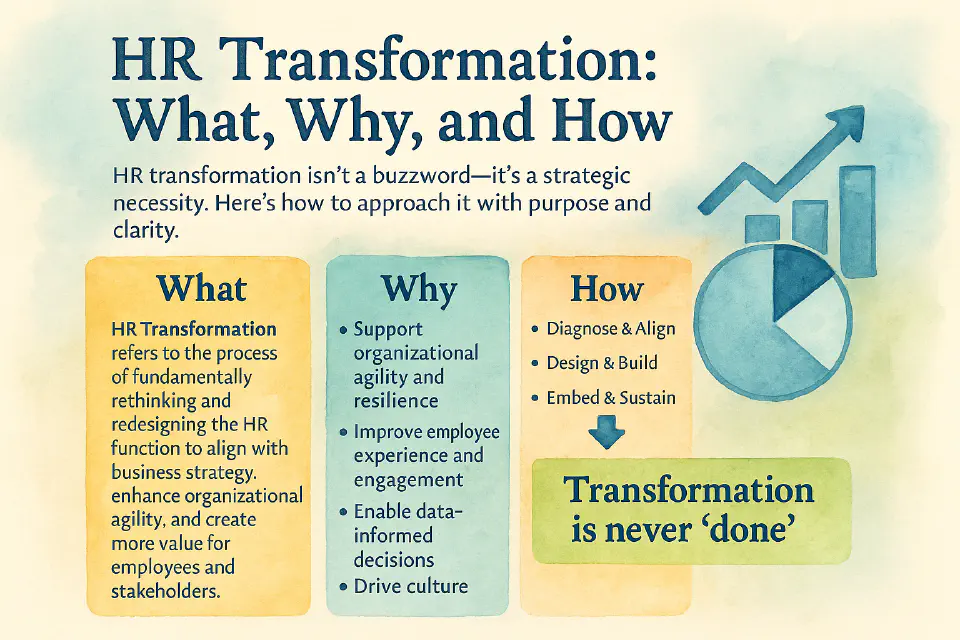
HR Transformation: What, Why, and How
HR transformation isn't a buzzword—it's a strategic necessity. Here's how to approach it with purpose and clarity.
What exactly is HR transformation? In simple terms, it’s a deliberate redesign of HR’s structure, strategy, technology, and capabilities to better support the changing needs of business and the workforce. But in practice, it’s much more than a process—it’s a mindset shift.
What Is HR Transformation?
HR transformation is not about “fixing HR” or digitizing paper workflows. It’s about repositioning HR as a strategic enabler of business performance, growth, and innovation. This involves:
- Realigning HR roles, responsibilities, and operating models
- Adopting digital tools and data-driven processes
- Embedding agility, responsiveness, and human-centered design
- Building future-ready capabilities across the function
Why HR Transformation Matters
The drivers behind HR transformation are both external and internal. Externally, we’re facing a volatile business landscape shaped by digital disruption, demographic shifts, and evolving employee expectations. Internally, many organizations are grappling with outdated HR systems, rigid processes, and lack of credibility at the leadership table.
Transforming HR is critical to:
- Support organizational agility and resilience
- Improve employee experience and engagement
- Enable data-informed decisions in talent and workforce management
- Drive culture, innovation, and strategic alignment
How to Approach HR Transformation
There is no single blueprint—but successful HR transformations tend to follow three core phases:
1. Diagnose & Align
- Assess the current state of HR (people, processes, tech, culture)
- Align transformation goals with overall business priorities
- Identify key pain points and opportunities
2. Design & Build
- Create a new HR operating model (e.g. agile teams, centers of excellence, shared services)
- Introduce enabling technologies (e.g. cloud HRIS, automation, analytics)
- Build change capability and communication plans
3. Embed & Sustain
- Train and enable HR professionals in new roles and mindsets
- Reinforce transformation through performance metrics and leadership support
- Create feedback loops and continuously evolve
Transformation Is Never “Done”
One common misconception is that transformation has an endpoint. In reality, HR transformation is continuous. The world of work is evolving too fast for static models. The goal isn’t to reach a perfect state—it’s to build an HR function that adapts, learns, and leads.
Final Thought
The future of HR depends on its ability to transform itself. That means letting go of old models, embracing complexity, and stepping fully into the role of strategic partner. Transformation is hard—but it’s also a powerful opportunity to reinvent how HR delivers value.